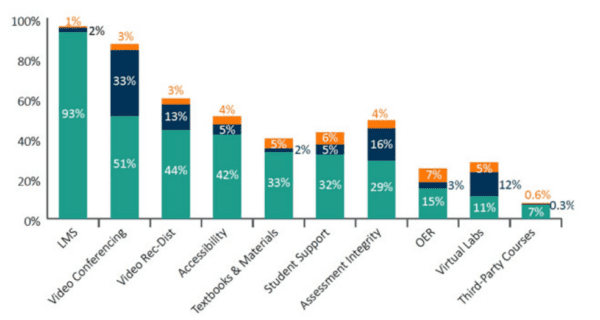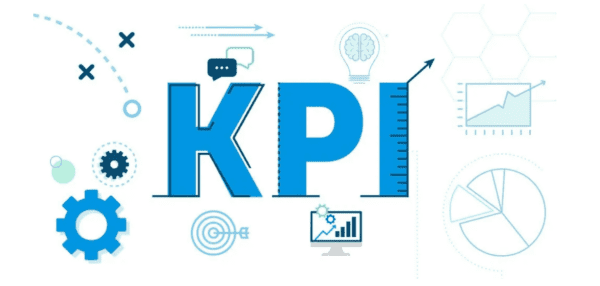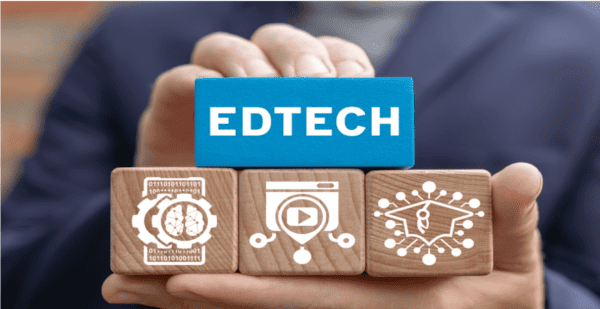Edtech content downloadables are digital resources that can be downloaded and used in the classroom. These resources can include lesson plans, activities, games, and assessments. They are designed to be interactive and engaging, making learning fun and effective. Using downloadable edtech content saves time on lesson planning and provides your students with high-quality resources aligned with your curriculum.
If you’re an educator, you know how important it is to keep up with the latest technology in the classroom. Edtech has revolutionized how we teach and learn, offering endless possibilities for engaging students and enhancing their educational experience. One way to incorporate edtech into your lessons is through downloadable content.
While edtech content downloadables can be a great addition to your classroom, it’s essential to consider these resources’ return on investment (ROI). You want to ensure that the time and money you’re investing in edtech is worth it in the long run. By evaluating the ROI of downloadable edtech content, you can determine whether they are an effective tool for your classroom and your students.

Understanding EdTech and Its Role in Education
EdTech, or Education Technology, uses digital resources and online platforms to enhance the teaching and learning experience. As the pandemic has forced schools to shift to remote learning, the growth of EdTech has accelerated significantly.
The Growth of EdTech Post-Pandemic
The pandemic has accelerated the adoption of EdTech, with schools and universities relying on digital tools to deliver quality education remotely; according to a report by HolonIQ, the global EdTech market is expected to grow to $404 billion by 2025. The need for personalized learning drives this growth, the rise of online learning, and the increasing demand for digital resources.
Digital Resources and Online Platforms
EdTech offers a range of digital resources and online platforms that can be used by students and teachers alike. These resources include interactive videos, e-books, and gamified learning apps that engage students and enhance their learning experience. Online platforms such as Google Classroom, Blackboard, and Canvas provide a centralized location for teachers to manage their classes, assignments, and assessments.
EdTech also offers a range of benefits for schools and universities. It can help reduce costs associated with traditional classroom learning, such as textbooks and physical classroom space. It can also help increase student engagement and retention, leading to better academic outcomes.
In conclusion, EdTech is an essential component of modern education, offering a range of digital resources and online platforms that enhance the teaching and learning experience. As online learning grows and the need for personalized learning increases, the demand for EdTech will continue to rise.

Evaluating EdTech ROI for Educational Institutions
Investing in EdTech downloadable content can be a significant expense for an educational institution. However, measuring the return on investment (ROI) can be challenging. To evaluate the ROI of your EdTech investment, you need to consider several key performance indicators (KPIs) and balance the cost with educational outcomes.
Key Performance Indicators for EdTech
To evaluate the ROI of your EdTech investment, you need to consider KPIs such as student outcomes, teacher satisfaction, and management systems. Student outcomes are a crucial KPI because they determine the effectiveness of the EdTech investment. You can measure student outcomes using data analytics to track student progress and identify areas of improvement.
Teacher satisfaction is another essential KPI because it determines the effectiveness of the EdTech investment. If teachers are satisfied with the EdTech downloadable content, they are more likely to use it effectively. Management systems are also critical because they provide a framework for measuring the success of the EdTech investment.

Balancing Cost and Educational Outcomes
When evaluating the ROI of your EdTech investment, it is essential to balance the cost with educational outcomes. While investing in high-quality EdTech content downloadables is necessary, you must ensure the investment is cost-effective. You can achieve this by choosing EdTech downloadable content that aligns with your educational goals and budget.
Moreover, you must ensure that the investment in EdTech downloadable content improves educational outcomes. If it does not, it may not be cost-effective. Therefore, it is essential to measure the ROI of your EdTech investment regularly.
Measuring the ROI of your EdTech investment can be challenging, but it is essential to ensure that your investment is cost-effective and results in improved educational outcomes. By considering KPIs such as student outcomes, teacher satisfaction, and management systems and balancing the cost with educational outcomes, you can effectively evaluate your EdTech investment’s ROI.
Content and Tools in EdTech
EdTech is a rapidly growing industry revolutionizing how students learn and teachers teach. Downloadable content is a crucial component of this industry, providing teachers with a wealth of resources to enhance their lesson plans and improve their students’ learning experience. In this section, we will explore the creation of effective EdTech content and the selection of the right EdTech tools for classrooms.

Creating Effective EdTech Content
Creating effective EdTech content is crucial to the success of any EdTech initiative. Good content can engage students, improve their understanding of the subject, and help them retain information. When creating EdTech content, it is essential to keep the following factors in mind:
- Relevance: Make sure the content is relevant to the subject matter and the student’s level of understanding.
- Clarity: Use clear and concise language to ensure students can easily understand the content.
- Engagement: Use interactive elements such as videos, quizzes, and games to motivate students.
- Accessibility: Ensure the content is accessible to all students, including those with disabilities.
Considering these factors, you can create effective EdTech content that enhances your students’ learning experience.
Selecting the Right EdTech Tools for Classrooms
Selecting the right EdTech tools for your classroom ensures your students get the most out of their learning experience. With so many EdTech tools available, knowing which ones to choose can be difficult. When selecting EdTech tools, consider the following factors:
- Compatibility: Ensure the tool is compatible with your existing software and hardware.
- Ease of Use: Choose tools that are easy to use and require minimal training for teachers and students.
- Functionality: Look for tools that have the functionality you need to enhance your lesson plans and improve the learning experience for your students.
- Cost: Consider the tool’s price and whether it provides good value for money.

By selecting the right EdTech tools for your classroom, you can improve the learning experience for your students and enhance your lesson plans.
Maximizing Student and Teacher Engagement
EdTech solutions can potentially revolutionize how students learn and teachers teach. They can increase student engagement and support teachers in delivering high-quality instruction when used effectively. Here are some strategies for maximizing student and teacher engagement using EdTech solutions.
Strategies for Increasing Student Engagement
One of the primary benefits of EdTech solutions is the ability to increase student engagement. By incorporating interactive and collaborative tools into their lessons, teachers can make learning more exciting and engaging for students. For example, gamification is a popular strategy for increasing student engagement. Students are more likely to be motivated and interested in the material by turning learning into a game.
Another strategy for increasing student engagement is using EdTech solutions that allow personalized learning. Teachers can increase student engagement and help students achieve their full potential by tailoring instruction to each student’s unique needs and interests. For example, adaptive learning platforms use algorithms to adjust the difficulty of the material based on the student’s performance.

Supporting Teachers with EdTech Solutions
EdTech solutions can also support teachers in delivering high-quality instruction. For example, professional development courses focusing on using EdTech solutions effectively can help teachers gain the skills and knowledge needed to integrate technology into their lessons. This can help them save time and increase their effectiveness in the classroom.
Another way EdTech solutions can support teachers is by providing tools for collaboration and communication. For example, learning management systems (LMS) allow teachers to share resources and communicate with students and parents. This can help streamline communication and improve collaboration between teachers and students.
In conclusion, EdTech solutions have the potential to significantly increase student engagement and support teachers in delivering high-quality instruction. By incorporating strategies for increasing student engagement and using EdTech solutions to support teachers, schools can maximize the ROI of their EdTech investments.
The Business of EdTech
The educational technology (edtech) market is rapidly expanding, with a projected global market size of $252 billion by 2020 1. Tech’s growth has fueled increased competition among companies, with marketing and customer acquisition becoming crucial for success.

Marketing and Customer Acquisition in EdTech
Edtech companies use various marketing strategies to acquire customers, including social media advertising, content marketing, and email marketing. Content marketing, in particular, has become an effective strategy for edtech companies to engage with potential customers. By creating valuable and informative content such as blog posts, whitepapers, and webinars, edtech companies can attract potential customers and build trust with their audience.
However, customer acquisition cost (CAC) is a significant challenge for edtech companies. Industry experts say the average CAC for edtech companies is $1,000 2. To reduce CAC, edtech companies must focus on building their brand, creating targeted marketing campaigns, and creating effective sales funnels.

Trends and Future Directions in the EdTech Market
EdTech is constantly evolving, with new technologies and trends emerging regularly. One of the most significant trends in edtech is the rise of personalized learning. Personalized learning uses technology to create customized learning experiences tailored to each student’s needs. This approach has proven effective in improving student outcomes and is expected to grow in popularity in the coming years. 3.
Another trend in edtech is using augmented reality (AR) and virtual reality (VR) in education. AR and VR technologies can provide immersive learning experiences that engage students and improve learning outcomes. Industry experts predict that the AR and VR market in education will grow at a CAGR of 34.64% from 2020 to 2025 4.
In conclusion, the edtech market is rapidly growing, with marketing and customer acquisition becoming increasingly important and successful. Edtech companies must focus on building their brand, creating targeted marketing campaigns, and creating effective sales funnels to reduce CAC. Additionally, personalized learning and AR/VR technologies are expected to be significant trends in the edtech market in the coming years.
Footnotes
- https://www.researchandmarkets.com/reports/4623116/global-education-technology-ed-tech-market ↩
- https://www.edsurge.com/news/2019-09-17-why-edtech-customer-acquisition-costs-are-so-high-and-what-to-do-about-it ↩
- https://www.edsurge.com/news/2020-02-05-personalized-learning-is-the-future-of-education ↩
- https://www.marketsandmarkets.com/Market-Reports/augmented-reality-virtual-reality-market-1185.html ↩
